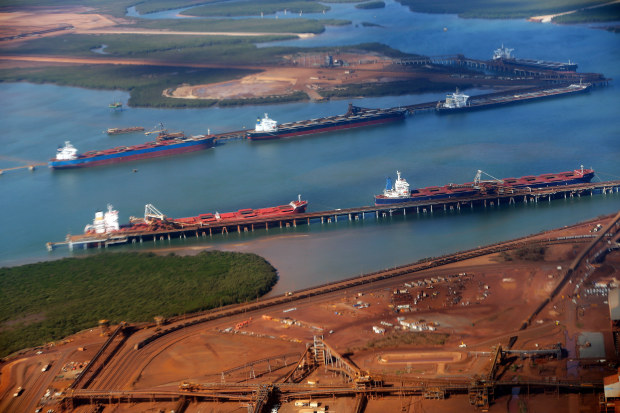These analysts called the iron ore rally no one saw coming
With iron ore prices finally beginning to cool after a shock 20 per cent rally in the third quarter, strategists and analysts are starting to re-evaluate their outlook for the commodity that’s already defied expectations this year.
After touching $US100 a tonne in early July, iron ore futures in Singapore went on to rally to six-month highs as Chinese steel mills continued to buy the commodity despite a weaker outlook from the nation’s ailing property sector.

“Compelling”: The recent rally has triggered major research houses to re-evaluate their outlook for iron ore. Bloomberg
The unexpected strength of Australia’s key export flew in the face of forecasts, with many banks including ANZ and Commonwealth Bank having tipped the commodity to fall below $US100 a tonne by the year’s end.
Among the few that did predict the rally, however, was Singapore-based research house Inspirante Trading Solutions. In a report published at the end of July, the firm wrote that the iron ore price was set to recover with Asian equity markets, suggesting a long play on futures contracts.
“From the current level of $US104.2, we will take risk-measured stop at $US98, slightly below a previous level of support, and take profit at $US120,” Inspirante wrote in the report that was released by Singapore exchange SGX, a major trading floor for iron ore futures.
Six weeks after the report was published, iron ore futures hit $US120 per tonne, where they stayed until recently. November contracts are currently trading at around $US115.75 per tonne.
Looking back at the team’s near-perfect investment call, Dylan Chan, research analyst with Inspirante, said his team were not entirely surprised by the rapid acceleration in the iron ore price that left many pundits scratching their heads.

“Our research indicated that market sentiment toward China was excessively bearish,” he said in an interview with The Australian Financial Review. It made “a tactical position in iron ore an asymmetric bet based on the market eventually correcting its overreaction”.
“What we saw when looking at the historical trends was that iron ore can demonstrate short-term strength even when Chinese economic data is bleak,” he added.
Mr Chan pointed to the past rallies in November 2021 and November 2022, which occurred both rapidly and to a larger magnitude, as evidence of iron ore’s tendency towards break-out rallies.
While Mr Chan was unaware if any traders outside the steel industry had successfully profited for his firm’s iron ore call, Jin Yu Cheong, a director of commodities at SGX, said banks and funds had also begun participating in the market in recent years.
“We have heard strong interest from the institutional investing community not only because of price movement but also because the uniquely backwardated nature of the iron ore price curve can yield consistent roll returns,” Mr Jin said.
“Given that the Chinese economy is the second largest in the world, investors and traders will be looking for angles to express a view or participate. Iron ore is therefore a compelling proxy.”
The recent rally has triggered major research houses to re-evaluate their outlook for the commodity, including Morgan Stanley where analysts raised their fourth-quarter outlook for the iron ore price by 17 per cent to $US105 per tonne.
“The unexpected strength in iron ore prices [...] is raising questions about how much higher the iron ore price can go, especially if China does move to cap steel production for FY23,” commodities strategist Amy Gower wrote in the report.
Further, Ms Gower is now predicting iron prices to hit $US120 per tonne by the end of the 2024’s first quarter, a 20 per cent boost to the bank’s previous forecasts.
As for Inspirante’s forecasts, with the recent cooling in the iron ore price, Mr Chan and the team have a more tempered outlook.
“Given the recent 20 per cent correction in iron ore prices since the beginning of August, we recommend a cautious approach for now, as the market is likely to encounter resistance at these levels,” he said.
Mr Chan pointed to low levels of stock at China’s steel mills as one seasonal factor that the team was watching for that could help drive the price in the back half of the year.
“We will also pay close attention to any government announcements from China concerning economic support and stimulus, as these could significantly alter market dynamics,” he added.
Introducing your Newsfeed
Follow the topics, people and companies that matter to you.
Find out moreRead More
Latest In Commodities
Fetching latest articles